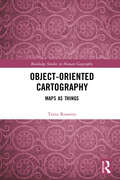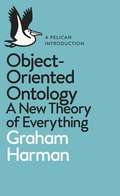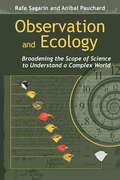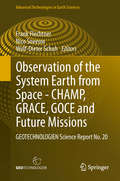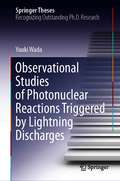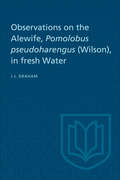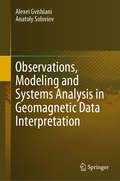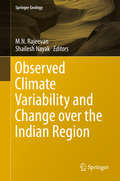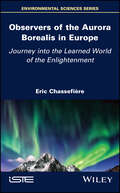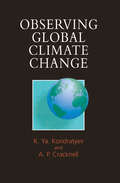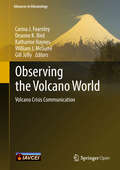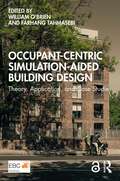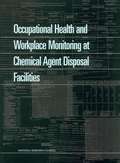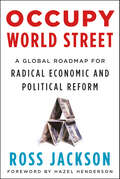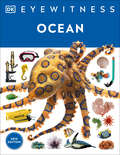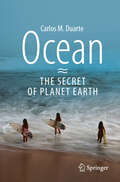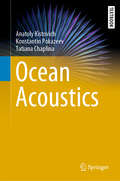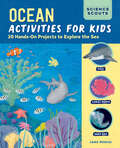- Table View
- List View
Oat
by Sebastian GasparisThe volume provides detailed protocols that have been developed or modified exclusively for the study of oat. The topics discussed in this book are a selection of various molecular biology and biotechnology methods, such as the application of molecular markers for polymorphism analyses and cytological manipulations, the production of synthetic polyploids, and in vitro cultures and genetic modifications. Written in the highly successful Methods in Molecular Biology series format, chapters include introductions to their respective topics, lists of the necessary materials and reagents, step-by-step, readily reproducible laboratory protocols, and tips on troubleshooting and avoiding known pitfalls. Cutting-edge and comprehensive, Oat: Methods and Protocols is a useful resource in the development of new research approaches toward organizing the oat genome and the identification of new and useful traits for further improvements of this exceptional crop.
Object-Oriented Cartography: Maps as Things (Routledge Studies in Human Geography)
by Tania RossettoObject-Oriented Cartography provides an innovative perspective on the changing nature of maps and cartographic study. Through a renewed theoretical reading of contemporary cartography, this book acknowledges the shifted interest from cartographic representation to mapping practice and proposes an alternative consideration of the ‘thingness’ of maps. Rather than asking how maps map onto reality, it explores the possibilities of a speculative-realist map theory by bringing cartographic objects to the foreground. Through a pragmatic perspective, this book focuses on both digital and nondigital maps and establishes an unprecedented dialogue between the field of map studies and object-oriented ontology. This dialogue is carried out through a series of reflections and case studies involving aesthetics and technology, ethnography and image theory, and narrative and photography. Proposing methods to further develop this kind of cartographic research, this book will be invaluable reading for researchers and graduate students in the fields of Cartography and Geohumanities.
Object-Oriented Ontology: A New Theory of Everything (Pelican Books)
by Graham HarmanWhat is reality, really?Are humans more special or important than the non-human objects we perceive?How does this change the way we understand the world?We humans tend to believe that things are only real in as much as we perceive them, an idea reinforced by modern philosophy, which privileges us as special, radically different in kind from all other objects. But as Graham Harman, one of the theory's leading exponents, shows, Object-Oriented Ontology rejects the idea of human specialness: the world, he states, is clearly not the world as manifest to humans. At the heart of this philosophy is the idea that objects - whether real, fictional, natural, artificial, human or non-human - are mutually autonomous. In this brilliant new introduction, Graham Harman lays out the history, ideas and impact of Object-Oriented Ontology, taking in everything from art and literature, politics and natural science along the way.Graham Harman is Distinguished Professor of Philosophy at SCI-Arc, Los Angeles. A key figure in the contemporary speculative realism movement in philosophy and for his development of the field of object-oriented ontology, he was named by Art Review magazine as one of the 100 most influential figures in international art.
Observation and Control of Magnetic Order Dynamics by Terahertz Magnetic Nearfield (Springer Theses)
by Takayuki KuriharaThis book explicates the optical controls of antiferromagnetic spins by intense terahertz (THz) electromagnetic waves. The book comprises two key components: (1) the experimental demonstration of the enhancement of a THz magnetic field using a split-ring resonator (SRR) and (2) the control of the direction of magnetization by using the enhanced THz magnetic field to break the symmetry of optically-induced phase transition. These make up the first step leading to future spintronics devices.In the beginning of the book, the author reviews the basics of the ultrafast laser and nonlinear optical techniques as well as the previously achieved experiments to control spin dynamics by THz magnetic fields. In this context, a new experimental protocol is described, in which electron spins in a ferromagnetic material are redirected at the unprecedented level in cooperation with the enhanced THz magnetic field. Subsequently, the author demonstrates that the THz magnetic field is significantly amplified as a nearfield around the SRR structured metamaterial, which is implemented by measuring spin precession in a solid. At the end, the author presents the key experiment in which the amplified THz magnetic nearfield is applied to the weak ferromagnet ErFeO3 along with the femtosecond near-infrared pulse, demonstrating the successful control of symmetry breaking of the spin system due to coherent control of the optically-induced spin reorientation phase transition pathways. The comprehensive introductory review in this book allows readers to overview state-of-the-art terahertz spectroscopic techniques. In addition, the skillful description of the experiments is highly informative for readers in ultrafast magnonics, ultrafast optics, terahertz technology and plasmonic science.
Observation and Ecology: Broadening the Scope of Science to Understand a Complex World
by Rafe Sagarin Aníbal PauchardThe need to understand and address large-scale environmental problems that are difficult to study in controlled environments--issues ranging from climate change to overfishing to invasive species--is driving the field of ecology in new and important directions. Observation and Ecology documents that transformation, exploring how scientists and researchers are expanding their methodological toolbox to incorporate an array of new and reexamined observational approaches--from traditional ecological knowledge to animal-borne sensors to genomic and remote-sensing technologies--to track, study, and understand current environmental problems and their implications. The authors paint a clear picture of what observational approaches to ecology are and where they fit in the context of ecological science. They consider the full range of observational abilities we have available to us and explore the challenges and practical difficulties of using a primarily observational approach to achieve scientific understanding. They also show how observations can be a bridge from ecological science to education, environmental policy, and resource management. Observations in ecology can play a key role in understanding our changing planet and the consequences of human activities on ecological processes. This book will serve as an important resource for future scientists and conservation leaders who are seeking a more holistic and applicable approach to ecological science.
Observation of the System Earth from Space - CHAMP, GRACE, GOCE and future missions
by Frank Flechtner Nico Sneeuw Wolf-Dieter SchuhSignificant advances in the scientific use of space based data were achieved in three joint interdisciplinary projects based on data of the satellite missions CHAMP, GRACE and GOCE within the R&D program GEOTECHNOLOGIEN. It was possible to explore and monitor changes related to the Earth's surface, the boundary layer between atmosphere and solid earth, and the oceans and ice shields. This boundary layer is our habitat and therefore is in the focus of our interests. The Earth's surface is subject to anthropogenetic changes, to changes driven by the Sun, Moon and planets, and by changes caused by processes in the Earth system. The state parameters and their changes are best monitored from space. The theme "Observation of the System Earth from Space" offers comprehensive insights into a broad range of research topics relevant to society including geodesy, oceanography, atmospheric science (from meteorology to climatology), hydrology and glaciology.
Observational Studies of Photonuclear Reactions Triggered by Lightning Discharges (Springer Theses)
by Yuuki WadaThis book presents the first simultaneous detection of neutrons and positrons after a terrestrial gamma-ray flash (TGF), a highest-energy transient phenomenon on the earth, triggered by a lightning discharge, based on innovative ground-based observations made in the Hokuriku area of Japan. TGFs, known to be produced by lightning discharges since the 1990s, has been theoretically predicted to react with atmospheric nuclei via photonuclear reactions because they comprise high-energy photons of more than 10 MeV, but such photonuclear reactions by lightning discharges, which produce neutrons and unstable isotopes emitting positrons, were not observationally confirmed. The reactions and propagations of their products in the atmosphere are modeled with Monte Carlo simulations to quantitatively evaluate observations of TGFs, neutrons, and positrons at ground level. The successful comparison between observation and simulation is presented, and demonstrates that lightning discharges to trigger photonuclear reactions and to even produce isotopes in the atmosphere.
Observations on the Alewife, Pomolobus Pseudoharengus (University of Toronto Biological Series #6)
by Joseph J. GrahamThe major study in this investigation was one of growth and form, carried out to evaluate differences in growth rates and body proportions between landlocked Lake Ontario and the anadromous Atlantic alewives. Particular attention was also given to the nature of the annual mortality that is characteristic of P. pseudoharengus in Lake Ontario.
Observations, Modeling and Systems Analysis in Geomagnetic Data Interpretation
by Alexei Gvishiani Anatoly SolovievGeomagnetic field penetrates through all shells of the solid Earth, hydrosphere and atmosphere, spreading into space. The Earth Magnetic Field plays a key-role in major natural processes. Geomagnetic field variations in time and space provide important information about the state of the solid Earth, as well as the solar-terrestrial relationships and space weather conditions. The monograph presents a set of fundamental and, at the same time, urgent scientific problems of modern geomagnetic studies, as well as describes the results of the authors’ developments. The new technique introduced in the book can be applied far beyond the limits of Earth sciences. Requirements to corresponding data models are formulated. The conducted experimental investigations are combined with development and implementation of new methods of mathematical modeling, artificial intelligence, systems analysis and data science to solve the fundamental problems of geomagnetism. At that, formalism of Big Data and its application to Earth Sciences is presented as essential part of systems analysis. The book is intended for research scientists, tutors, students, postgraduate students and engineers working in geomagnetism and Earth sciences in general, as well as in other relevant scientific disciplines.
Observed Climate Variability and Change over the Indian Region
by M. N. Rajeevan Shailesh NayakThe objective of the book is to make a comprehensive documentation of the observed variability and change of the regional climate system over the Indian region using the past observed data. The book addresses all the important parameters of regional climate system so that a physically consistent view of the changes of the climate system is documented. The book contains 16 chapters written by the subject experts from different academic and research institutes in India. The book addresses all important components/parameters of the climate system, like rainfall, temperature, humidity, clouds, moisture, sea surface temperature and ocean heat content, sea level, glaciers and snow cover, tropical cyclones and monsoon depressions, extreme rainfall and rainstorms, heat waves and cold waves, meteorological droughts, aerosols, atmospheric aerosols, ozone and trace gases and atmospheric radiative fluxes. One chapter deals with the past monsoon using monsoon proxy data. The last chapter deals with the future climate change projections over the Indian region (rainfall and temperature) made using coupled climate models. Most of the analyses (especially on rainfall, temperature, extreme rainfall, sea surface temperature, meteorological droughts) are based on the data for a longer period of 110 years, 1901-2010. For some other parameters like moisture, clouds, heat waves and cold waves, atmospheric aerosols, ozone and trace gases and radiative fluxes, data of shorter period have been used. The articles documented inter-annual and decadal variability in addition to documenting long term trends of different parameters. The trends have been tested for statistical significance using standard techniques. It is expected that the present book will be an excellent reference material for researchers as well as for policy makers. These results will be useful in interpreting future climate change scenarios over the region being projected using coupled climate models. Further analysis of these results is required for attributing the observed variability and change to natural and anthropogenic activities.
Observers of the Aurora Borealis in Europe: Journey into the Learned World of the Enlightenment
by Eric ChassefiereThe spectacular reappearance of the aurora borealis at the beginning of the 18th century, often observed simultaneously from different observatories in Europe, mobilized and federated a large community of astronomers on a European scale. It encouraged them to communicate the results of their observations and, in compiling exhaustive catalogs of information, has helped to establish a system of the aurora borealis that can be further studied in the future, according to the experimental method inherited from the previous century. This book is dedicated to some of the main aurora observers in Europe and to the human, institutional and philosophical context in which they evolved in the first half of the 18th century. Its reading should be seen as a retrospective journey through the scholarly world of the Enlightenment, during which the same scholars are frequently encountered and reencountered, yet each time in different contexts, or from different angles, with the aim of compiling an account of the swarming of ideas and encounters that constituted the development of experimental science in this pivotal period.
Observing Global Climate Change
by Arthur P. Cracknell Kyrill Ya KondratyevThis collaborative book aims to offer a comprehensive introduction to global climate, the way it is currently changing, the role of earth, air and satellite observation and monitoring, and subsequent climate modelling. It focuses on the interaction between natural and anthropogenic human- made change factors. The book emphasizes the importance of capturing climatic data and the use of that data in computer-based climatic modelling.
Observing God's World
by Abeka BooksObserving God's World, is a Science by Abeka, for homeschooling, or schools to use for 6th grade studies.
Observing Weather And Climate From The Ground Up: Nationwide Network Of Networks
by National Research Council of the National AcademiesDetailed weather observations on local and regional levels are essential to a range of needs from forecasting tornadoes to making decisions that affect energy security, public health and safety, transportation, agriculture and all of our economic interests. As technological capabilities have become increasingly affordable, businesses, state and local governments, and individual weather enthusiasts have set up observing systems throughout the United States. However, because there is no national network tying many of these systems together, data collection methods are inconsistent and public accessibility is limited. This book identifies short-term and long-term goals for federal government sponsors and other public and private partners in establishing a coordinated nationwide "network of networks" of weather and climate observations.
Observing the Volcano World: Volcano Crisis Communication (Advances in Volcanology)
by Carina J. Fearnley Deanne K. Bird Katharine Haynes William J. McGuire Gill JollyThis open access book provides a comprehensive overview of volcanic crisis research, the goal being to establish ways of successfully applying volcanology in practice and to identify areas that need to be addressed for future progress. It shows how volcano crises are managed in practice, and helps to establish best practices. Consequently the book brings together authors from all over the globe who work with volcanoes, ranging from observatory volcanologists, disaster practitioners and government officials to NGO-based and government practitioners to address three key aspects of volcanic crises. First, the book explores the unique nature of volcanic hazards, which makes them a particularly challenging threat to forecast and manage, due in part to their varying spatial and temporal characteristics. Second, it presents lessons learned on how to best manage volcanic events based on a number of crises that have shaped our understanding of volcanic hazards and crises management. Third, it discusses the diverse and wide-ranging aspects of communication involved in crises, which merge old practices and new technologies to accommodate an increasingly challenging and globalised world. The information and insights presented here are essential to tapping established knowledge, moving towards more robust volcanic crises management, and understanding how the volcanic world is perceived from a range of standpoints and contexts around the globe.
Ocala National Forest (Images of America)
by Dr Rob Norman Gene GallantThe Ocala National Forest, founded on November 24, 1908, by Pres. Theodore Roosevelt, is the oldest national forest in the eastern continental United States. The forest is one of Central Florida's last remaining expanses of forested lands with magnificent palms, towering live oaks, and the largest sand pine scrub population in the world. The Ocala National Forest contains major springs, including Salt Springs, Silver Glen, Alexander, and Juniper Run. In addition to several wilderness areas for visitors seeking primitive conditions and solitude, the forest has visitor centers, nature trails, and a section of the Florida Trail. Images of America: Ocala National Forest is filled with fascinating stories and exciting facts on the history of the steamboats, logging, trails, movie sets (including The Yearling, based on the Pulitzer Prize-winning novel by Marjorie Kinnan Rawlings), Cracker cowboys, modern conservation efforts, and more.
Occupant-Centric Simulation-Aided Building Design: Theory, Application, and Case Studies
by William O’Brien Farhang TahmasebiOccupant-Centric Simulation-Aided Building Design promotes occupants as a focal point for the design process. This resource for established and emerging building designers and researchers provides theoretical and practical means to restore occupants and their needs to the heart of the design process. Helmed by leaders of the International Energy Agency Annex 79, this edited volume features contributions from a multi-disciplinary, globally recognized team of scholars and practitioners. Chapters on the indoor environment and human factors introduce the principles of occupant-centric design while chapters on selecting and applying models provide a thorough grounding in simulation-aided building design practice. A final chapter assembling detailed case studies puts the lessons of the preceding chapters into real-world context. In fulfillment of the International Energy Agency’s mission of disseminating research on secure and sustainable energy to all, Occupant-Centric Simulation-Aided Building Design is available as an Open Access Gold title. With a balance of fundamentals and design process guidelines, Occupant-Centric Simulation-Aided Building Design reorients the building design community toward buildings that recognize and serve diverse occupant needs, while aiming for superior environmental performance, based on the latest science and methods.
Occupational Health and Workplace Monitoring at Chemical Agent Disposal Facilities
by National Research CouncilThe National Academies Press (NAP)--publisher for the National Academies--publishes more than 200 books a year offering the most authoritative views, definitive information, and groundbreaking recommendations on a wide range of topics in science, engineering, and health. Our books are unique in that they are authored by the nation's leading experts in every scientific field.
Occupy World Street: A Global Roadmap for Radical Economic and Political Reform
by Ross JacksonOrdinary citizens the world over have long paid the price for the swashbuckling behavior of the corporate and political elite. We've seen the reigning establishment widen the gap between rich and poor, champion endless growth on a finite planet, wreak havoc on developing nations, and ravage ecosystems in a mad race for natural resources.Now, as demonstrators worldwide demand change, Occupy World Street offers a sweeping vision of how to reform our global economic and political structures, break away from empire, and build a world of self-determining sovereign states that respect the need for ecological sustainability and uphold human rights.In this refreshingly detailed plan, Ross Jackson shows how a handful of small nations could take on a leadership role; create new alliances, new governance, and new global institutions; and, in cooperation with grassroots activists, pave the way for other nations to follow suit.
Occurence & Distribution of Selenium
by Milan IhnatA comprehensive and critical assessment of selenium levels in both natural and man-made materials and systems is presented in this publication. The book begins with a treatment of the chemistry and analytical chemistry of the element and an important discussion of the status and reliability of analytical data together with the approach to be followed in extracting, managing and presenting the information. An in-depth treatment of selenium is arranged according to groupings of the different materials and systems. Each chapter discusses the occurrence of selenium in and distribution among components of the specified system. Additionally, easy reference compilations of concentration data based on critical assessment of the selenium literature are provided, along with a comprehensive listing of the pertinent literature. The book concludes with chapters on the biogeochemistry of selenium in natural systems. Throughout, consideration is given to both total selenium and its compounds.
Ocean (DK Eyewitness)
by DKImmense shoals of barracuda, forests of giant kelp, and the world&’s largest volcano – these are just a few of the majestic sights in the world&’s oceans.Our seas are by far the largest habitat on Earth and are home to an astonishing 90 percent of the world&’s biodiversity. Life itself began in the oceans and has proliferated to include innumerable numbers of marine species, from single-celled archaea to giant manta rays, sea turtles, and blue whales.Ocean is your guide to this most mysterious part of the natural world. It explores the geography of the oceans, which includes volcanoes forming a "Ring of Fire", trenches 10 km (6 miles) deep, hydrothermal vents, ice shelves, and hundreds of sea mountains and even waterfalls. This stunning and comprehensive book unveils how the underwater world operates: its tidal rhythms, currents, tsunamis, and typhoons. It also showcases some of the most beautiful and diverse marine flora, including seaweeds such as limey petticoats, giant kelp, and oyster thief, as well as coastal fish and marine creatures such as the lanternfish, adapted to live in the remotest part of the ocean&’s depths.Ocean captures the beauty and scientific complexity of this vital habitat and at a time when global warming poses a real threat, it is essential reading for everyone interested in marine conservation.
Ocean - The Secret of Planet Earth
by Carlos M. DuarteThe ocean characterises planet Earth and differentiates it from the more than 5000 known planets. It is also the habitat where life emerged as a singularity in the universe. However, we know less about the oceans than we do about some remote planets such as Mars.This book provides basic facts for understanding the oceans, their properties and their importance to mankind through the ages. The long relationship between the ocean and humanity, which permeates all areas of our culture, is at a crossroads where human activity is profoundly affecting its functioning and the integrity of marine ecosystems. However, the intelligent and rational use of the ocean holds, in large part, the key to providing the resources needed to sustain our quality of life in the future. Unlocking, through scientific research, the secrets that the ocean still holds is an essential challenge for humanity. This book informs the reader about all these aspects of the ocean through a text that combines scientific rigour with personal reflections based on the author's own experiences, dedicated to exploring and learning more about the ocean.
Ocean Acidification
by Research Committee on the Development of an Integrated Science Strategy for Ocean Acidification Monitoring Impacts AssessmentOver recent years, human activities such as the burning of fossil fuels have increased the amount of carbon dioxide gas emitted to the atmosphere--and the amount that dissolves into the ocean. Now, so much carbon dioxide has been absorbed by the ocean that the chemistry of seawater is changing, causing the ocean to become more acidic. Based on a National Research Council report, this booklet describes the well-understood chemistry of ocean acidification and explores the many questions that remain: How will ocean acidification impact marine life such as fish, corals, and shellfish? How will the effects on individual species scale up to whole ecosystems? What will ocean acidification mean for aquaculture, the fishing industry, and coastal tourism?
Ocean Acoustics (Springer Textbooks in Earth Sciences, Geography and Environment)
by Konstantin Pokazeev Anatoly Kistovich Tatiana ChaplinaThis book presents a comprehensive overview of hydroacoustics and describes the physical basis of acoustic processes observed in the sea. In addition, it discusses the basic concepts and provides simplified models of sound propagation and acoustic phenomena at the boundary between environments. Lastly, the book examines in detail a number of applications of ocean acoustics and methods. The ocean is the last reserve of natural resources. It is also an essential element in the biosphere, ensuring the latter’s balance, and plays a pivotal role in the Earth’s climate system and global warming. Consequently, studying the ocean is one of humankind’s most critical scientific tasks, but penetrating its mysteries is no mean feat. Acoustics (hydroacoustics) is one of the most powerful tools for examining the water layer and beyond, since sound waves are the only type of radiation that can propagate over distances of hundreds and even thousands of kilometers in the ocean.This unique resource appeals to specialists working in the fields of ocean and atmosphere physics, students and postgraduate students studying sea physics and oceanology, and anyone who is interested in the problems the ocean is currently facing.
Ocean Activities for Kids: 20 Hands-On Projects to Explore the Sea (Science Scouts)
by Laura PetrusicInspire kids to explore like a scientist with an illustrated ocean activity guide for ages 8 to 12.Calling all ocean lovers: Are you ready to think like a scientist and adventure like an explorer? This fun and interactive guide shows you how to discover the seas with an active mind for learning. Travel down into the depths with 20 lessons and 20 activities that show you how different parts of the ocean work together, and explore all the unbelievable things the ocean does, such as moving with the moon, changing the shape of shorelines, and providing a home to millions of amazing creatures!Explore and play—See ocean science in action with fun experiments such as creating a tide pool, dissolving the earth's crust, simulating how jellyfish release their venom, and so much more.The 5 Science Scout skills—Practice the key skills that scientists and explorers use to discover the world as you Observe, Ask, Imagine, Test, and Reflect.Start an ocean journal—Use the journal pages and writing prompts to record your ideas and observations as you try the experiments—or create some marine memories if you visit the ocean yourself!Introduce curious kids to marine science and exploration with Ocean Activities for Kids—part of the Science Scouts series!

